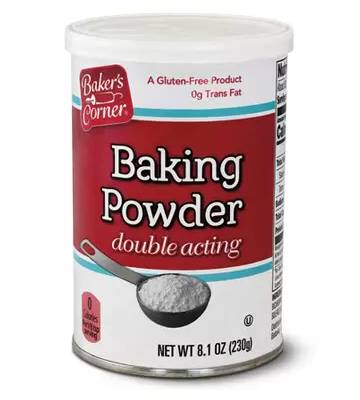Food Nutrition Facts
Nutrition Facts For
Baking Powder
Portion Size: 1 Teaspoon
| Nutrient | Value | % Daily Value* |
|---|---|---|
| 5.0 kcal | 0% | |
| 0.0 g | 0% | |
| 0.0 g | 0% | |
| 0.0 mg | 0% | |
| 1080 mg | 47% | |
| 0.0 mg | 0% | |
| 1.0 g | ||
| 0.0 g | ||
| 0.0 g | ||
| 0.0 g | ||
| 0.0 g | ||
*Daily value based on a 2,000 calorie diet. Your daily values may be higher or lower depending on your calorie needs and health goals.
Calculate your daily calorie needs here
Nutrition Facts For 1 Teaspoon of Baking Powder

Baking Powder is only Keto Friendly in small amounts.
Baking powder is a leavening agent crucial in baking, responsible for creating the light and airy texture in many baked goods. It's a dry chemical mixture that releases carbon dioxide gas when combined with moisture and heat. This gas creates bubbles in the batter or dough, causing it to expand and rise. Baking powder is typically composed of an acid (often cream of tartar or sodium aluminum sulfate), an alkali (usually sodium bicarbonate, also known as baking soda), and a starch (like cornstarch) to absorb moisture and prevent premature reaction. This carefully balanced combination ensures consistent and predictable leavening.
Unlike baking soda, which requires an acidic ingredient to activate, most baking powders sold today are "double-acting." This means they release a small amount of carbon dioxide when mixed with liquid, and a further release when heated. This double-acting mechanism provides a more reliable and forgiving leavening action, allowing bakers more time to prepare their batters before baking. It's essential to check the expiration date of baking powder, as it can lose its potency over time, resulting in flat or dense baked goods. Proper storage in a cool, dry place is also important to maintain its effectiveness.







